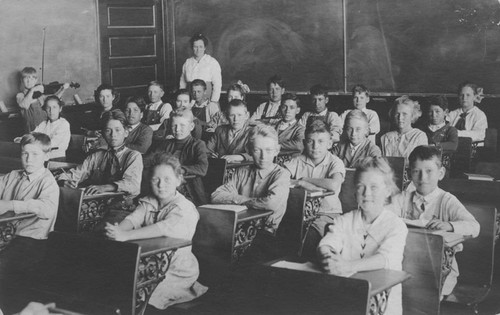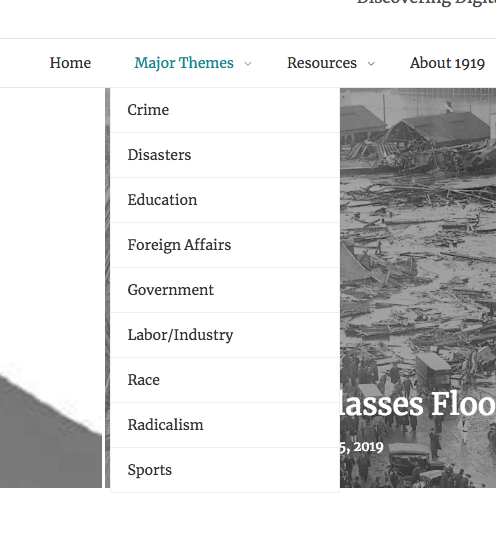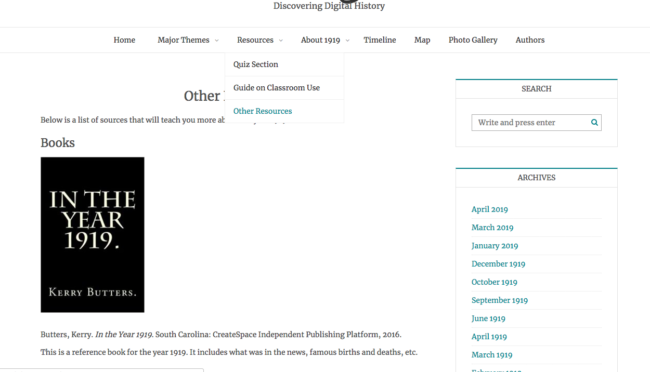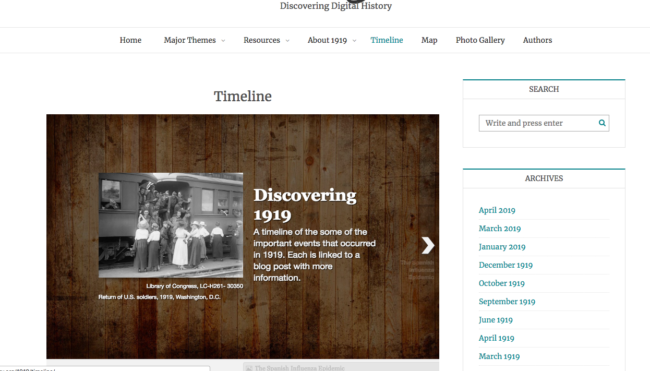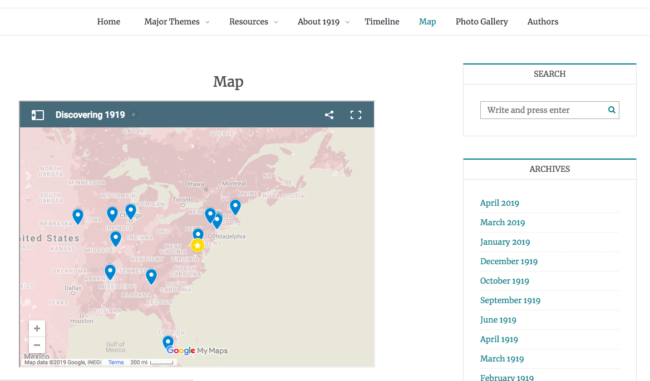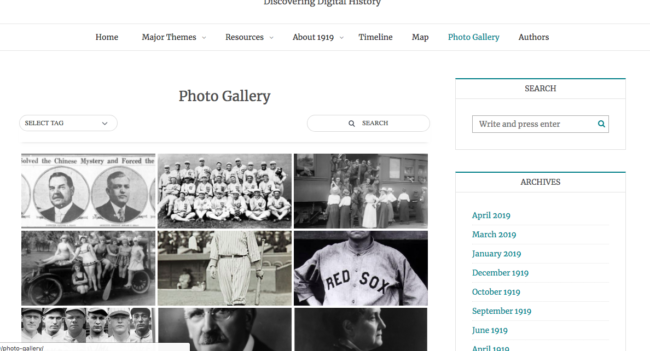Below is a walkthrough of our site and suggestions on how it can be used in a classroom setting.
Major Themes
Our website explores the events of 1919, which can be found under the Major Themes tab of our menu. All our blogs are divided into themes (Crime, Disasters, Education, Foreign Affairs, Government, Labor/Industry, Race, Radicalism, and Sports) to organize the events and make it easier to find a specific topic. Each blog post includes a summary of the event explaining what happened, why it is important, and where more information on the topic can be found. The tags listed on the side of the blog posts makes it useful to find connections between events and the people who took part in them—the tag “red summer,” for example, can be found in three blog posts: Omaha Race Riots, Charleston Race Riot, and Chicago Race Riots.
*Note that all the way on the bottom of our site there is a citation style guide that will be useful for students who are using the blog posts for a paper.
Classroom suggestion: Have students read a blog post and then write up their own fictional story based on the actual event. Example: A student who reads the Volstead Act blog chooses to write a story about the life a bootlegger and his/her experience with the rise and fall of prohibition.
Quiz Section
Under the resources tab of our top menu, a quiz section (based on the events in the blog posts) can be found. This section consists of one quiz with 41 questions, each worth one point. At the end, the form will show up again, highlighting what you got wrong and the correct answer.
Classroom suggestion: After having your students read the blog posts, test their knowledge with these quizzes.
Other Resources
If you read up on all the events and feel as if you want to learn more about 1919, this is where you’ll find resources to do just that. Located under the resources tab, this page lists books, journals, and news/magazine articles that will give you a better understanding of the events that unfolded in 1919 and their impact.
Classroom suggestion: Offer students the option of using these resources for an extra credit assignment. Example: A student reads the article “Historians Rate 1919 As America’s Worst Year” and writes a short summary explaining why that is.
Timeline
On the timeline located in the top menu, the events from the blog posts are listed in order of occurrence.
Classroom Suggestion: Have students look through the timeline. This will give them an understanding of the order events. Chronology is important to understand cause and effect, to make connections, and to recognize the “big picture” of 1919’s history.
Map
The map, which can be found on the top menu, includes where each of the events discussed in the blog posts takes place.
Classroom suggestion: Show students the map to give them a better sense of where the events in 1919 took place. Ask questions like “Where are these events concentrated and why do you think that is?”
Photo Gallery
In our photo gallery, which can be found on the top menu, you will see images related to the events for the blog posts.
Classroom suggestion: Do a gallery walk
- Select pictures to hang up around the classroom
- Provide students with a worksheet divided into columns numbered for the amount of pictures posted; students should be asked what is going on in the picture, what event is being shown, and why it is important
- Have students divided into groups that rotate every five minutes to another picture in the classroom
- After every group has had a chance to look at all of the pictures, have a class discussion on the student’s findings
